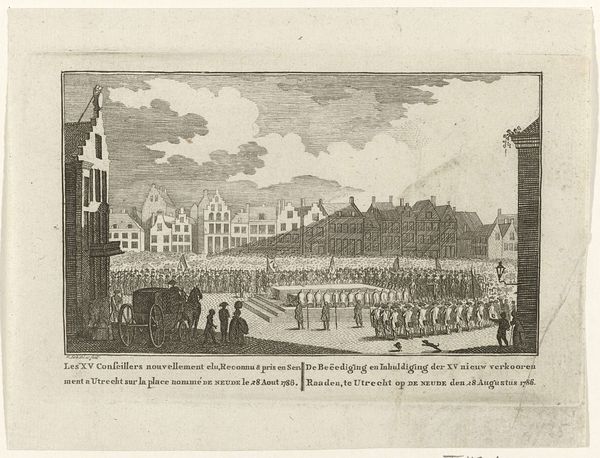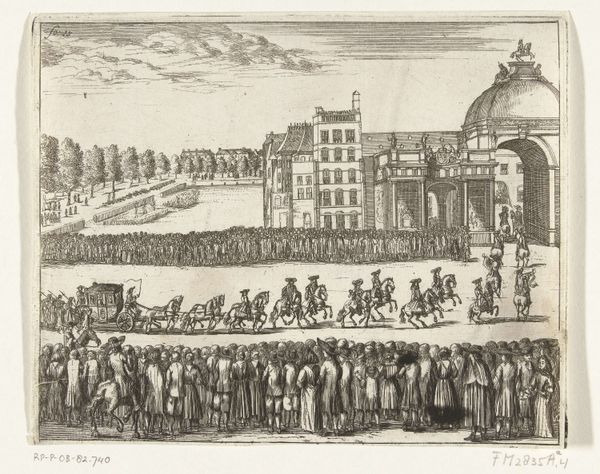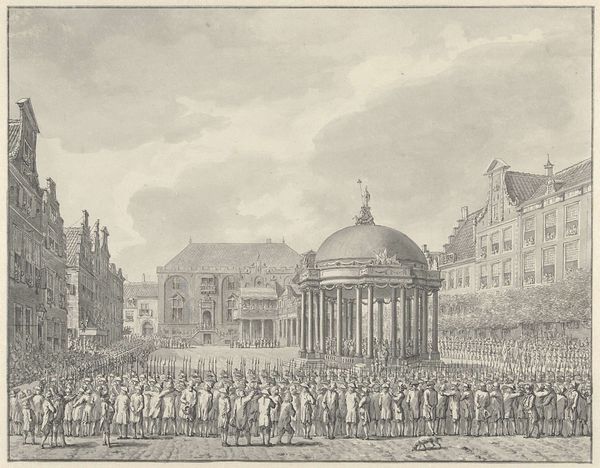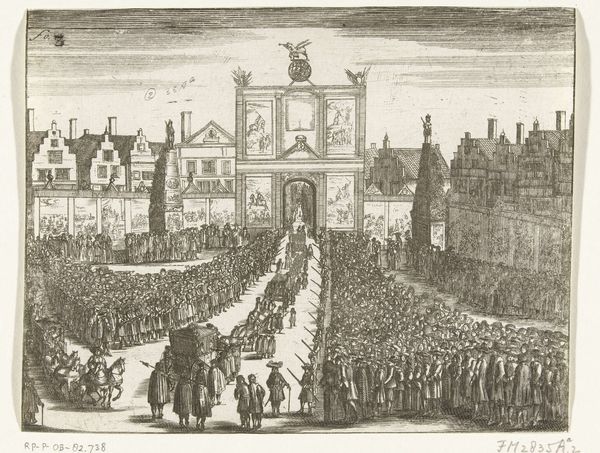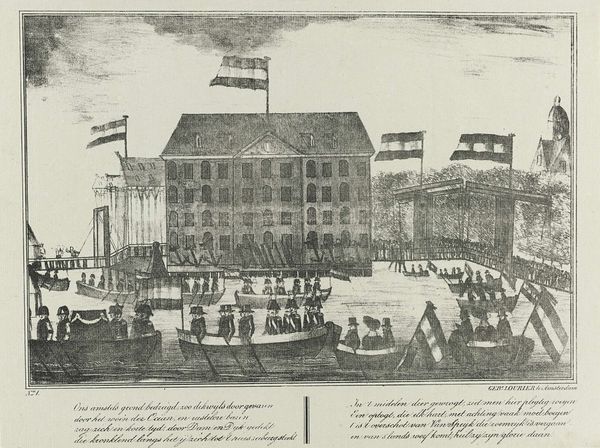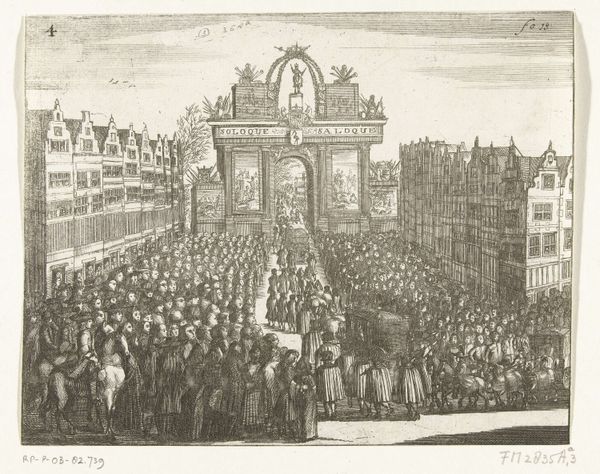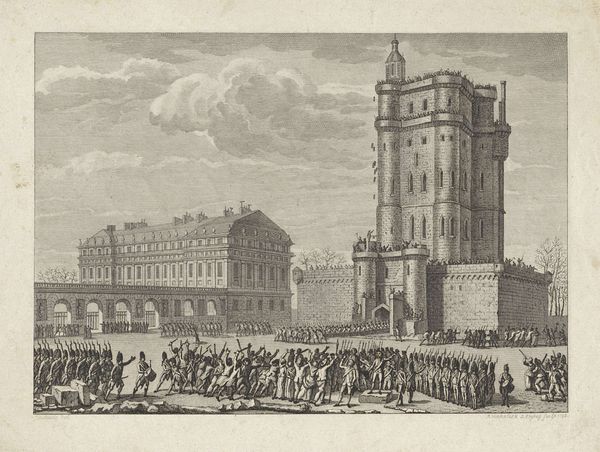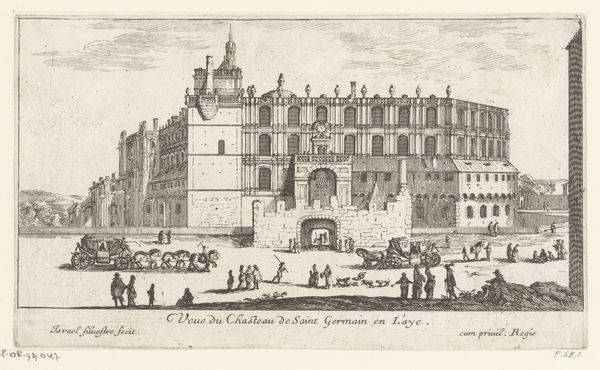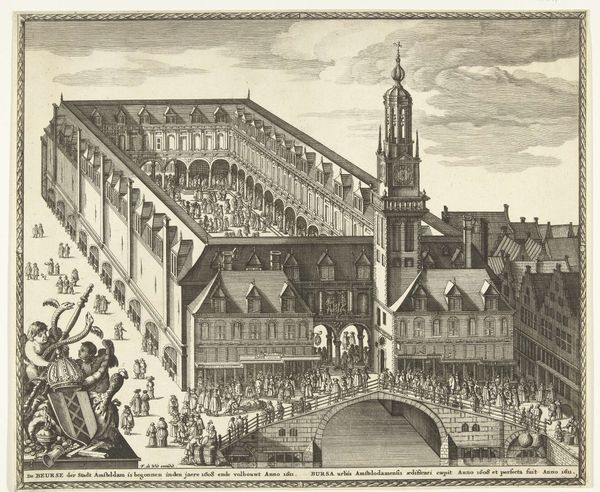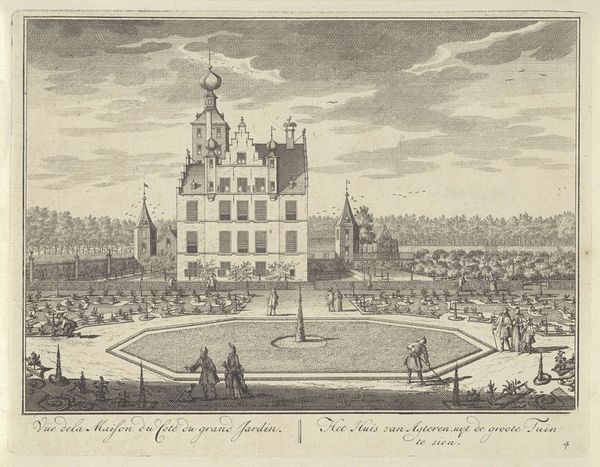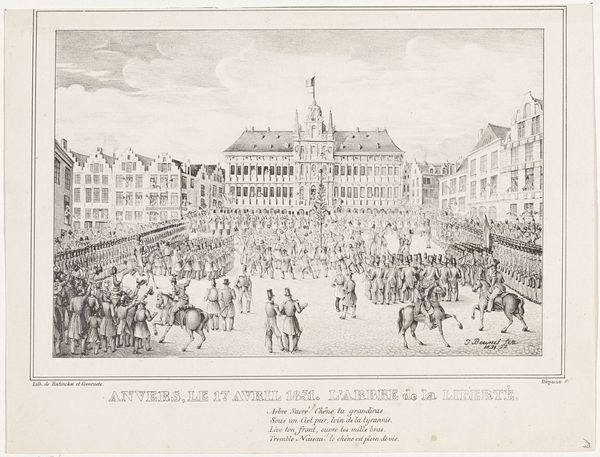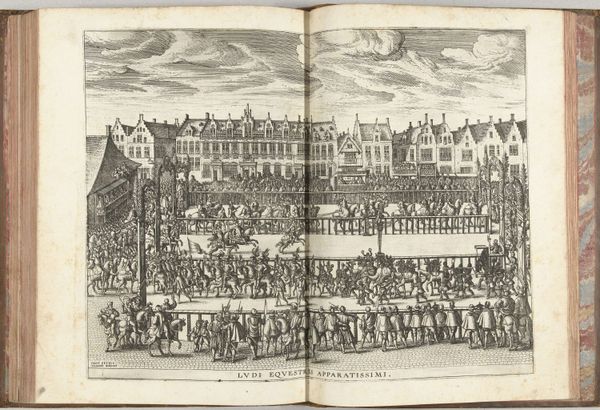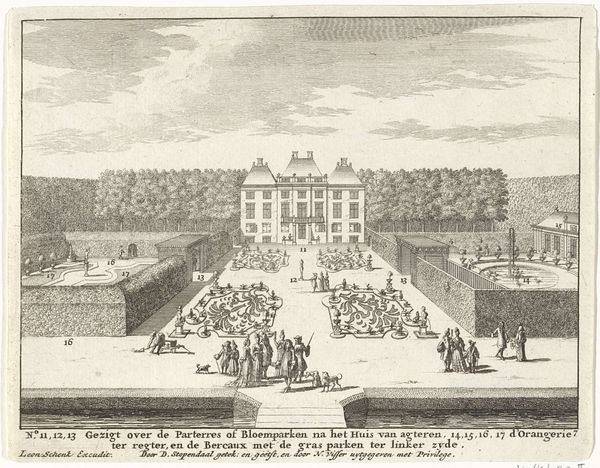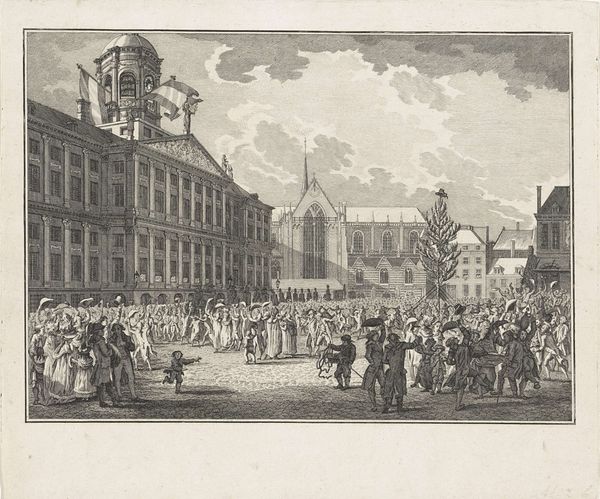
print, engraving
#
neoclacissism
# print
#
old engraving style
#
cityscape
#
history-painting
#
engraving
Dimensions: height 142 mm, width 198 mm
Copyright: Rijks Museum: Open Domain
Curator: We’re looking at "Verovering van de Kattenburgerbrug, 1787," an engraving that likely commemorates an event in Amsterdam’s history. It appears to be crafted in an old engraving style. What's your initial take? Editor: A sea of people, flowing almost like a liquid tide! It has a chaotic energy, despite the relatively static style of the buildings in the background. There's something theatrical, almost cartoonish about it. Curator: Indeed. Given its time of creation in 1787, this work carries elements of Neoclassicism, which can be discerned in its precise line work and commitment to historical documentation, aligning the visual language with Enlightenment ideals of reason and order. We can think about the printmaking process and how it was very much an important communication technology back then. Editor: Knowing it’s Neoclassical helps. But honestly, my first thought was folk art; it captures a very specific moment, maybe even idealizes it, with the focus not on grand figures but on this teeming mass of people. Are they rebelling, celebrating...what are they doing? Curator: Most likely celebrating some kind of siege that liberated Amsterdam from Stadtholder troops back in 1787. This piece of graphic work then functions as political propaganda distributed for popular consumption, much like how a news press would be distributed across nations today. This cityscape offers not just historical record but also commentary on labour, the printing industry, and urban life. Editor: Thinking about the labour that went into creating this makes me appreciate the precision. To carve all these tiny, distinct figures... What do you make of that building? It dominates the left of the composition, overshadowing the drama below. Curator: Likely a warehouse. Considering Amsterdam’s maritime prominence, warehouses played essential roles, connecting trade routes and resource flow through Europe. The image therefore highlights social organisation necessary for commercial activity. Editor: The contrast between the building’s rigid, vertical structure and the swarm below creates tension. What started for me as folk art is, in the end, this fascinating intersection between art, news, labor and political ambition. Curator: Exactly, revealing how artistic creations have served purposes far beyond simple aesthetics in the broader tapestry of historical forces and production relationships.
Comments
No comments
Be the first to comment and join the conversation on the ultimate creative platform.
